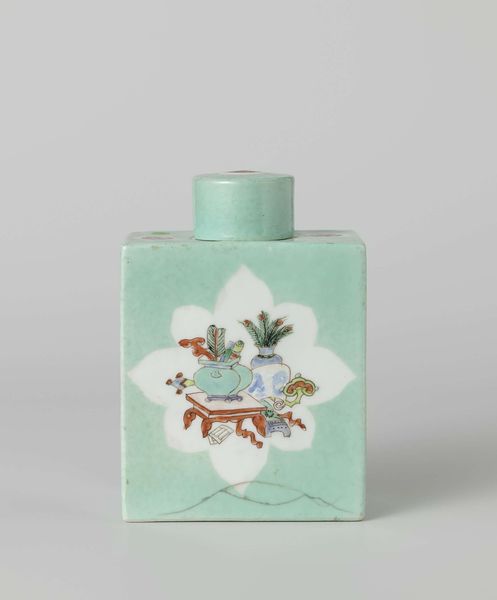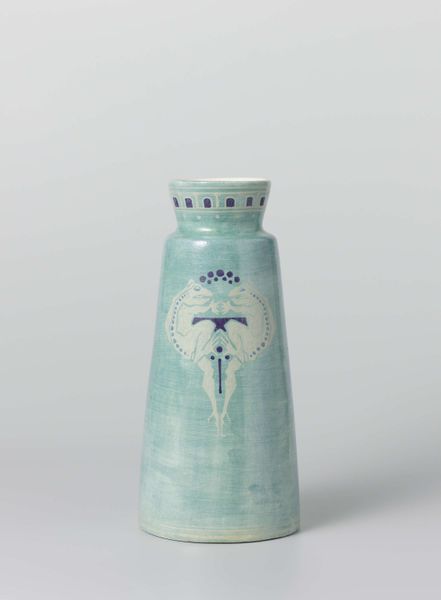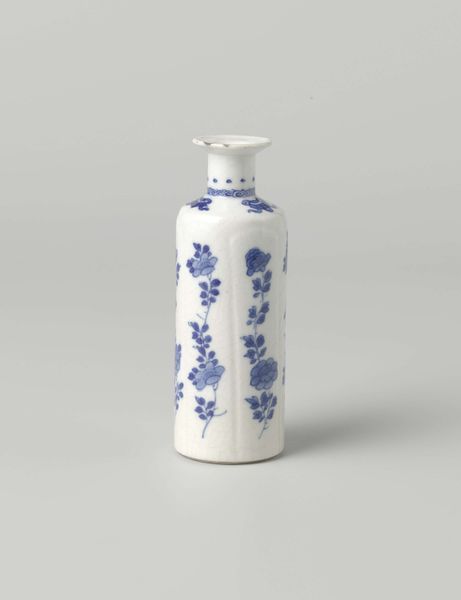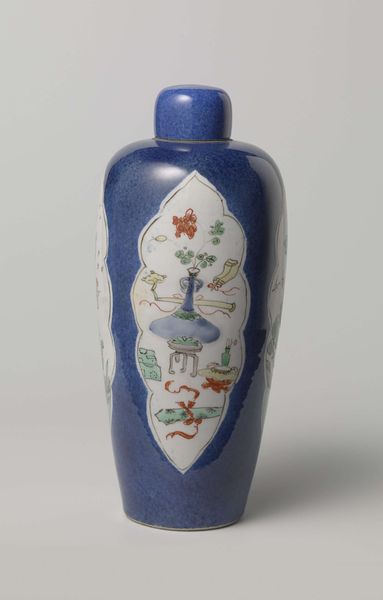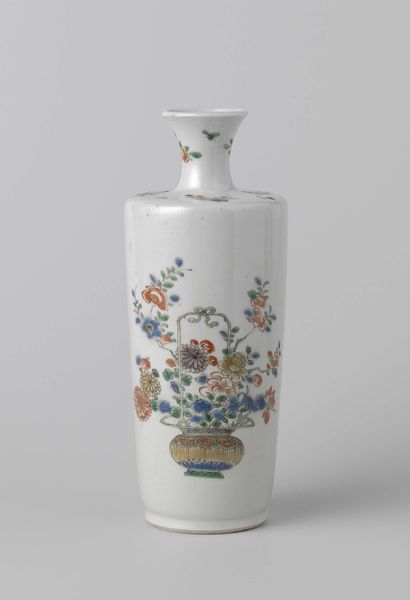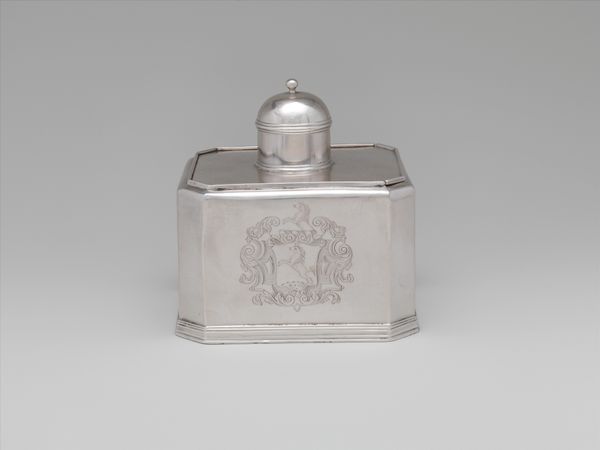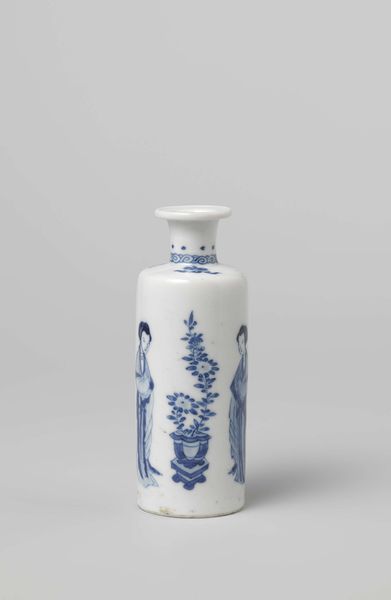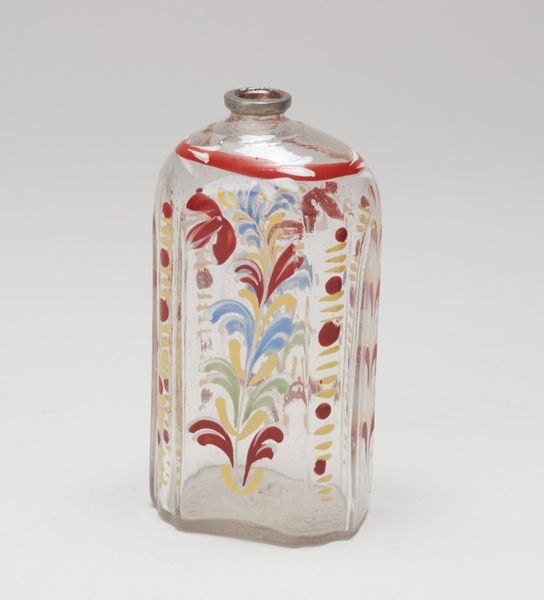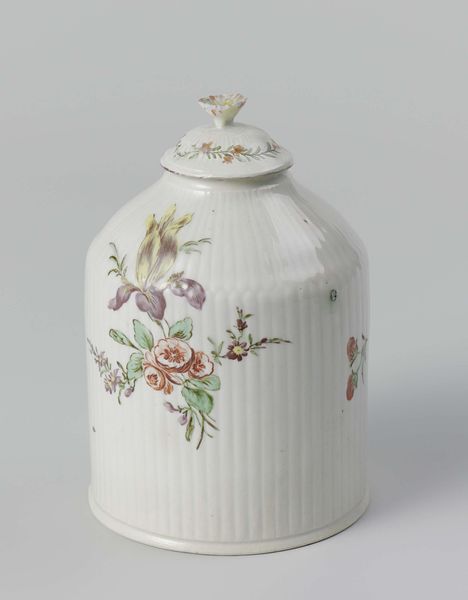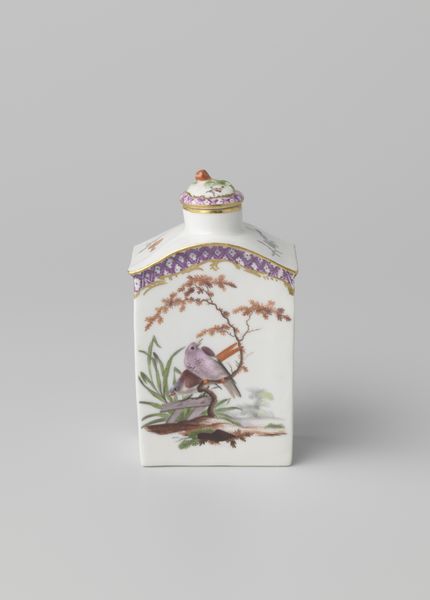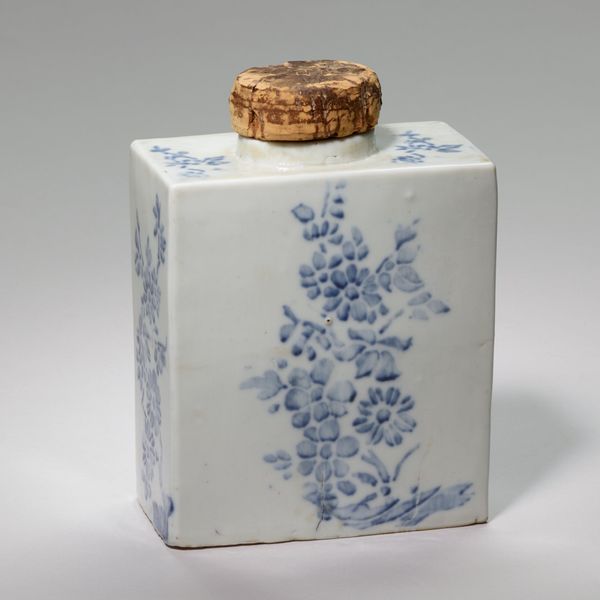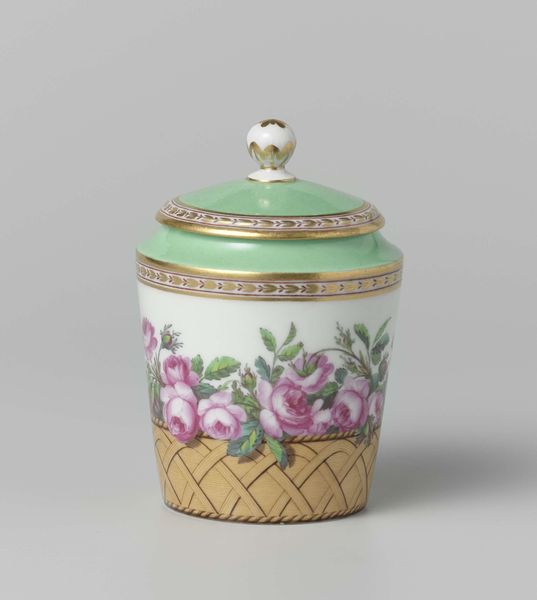
Rectangular tea caddy covered with a light blue glaze and antiquities in panels c. 1760 - 1770
0:00
0:00
ceramic, earthenware
#
ceramic
#
earthenware
#
orientalism
#
rococo
Dimensions: height 2.7 cm, diameter 4.4 cm
Copyright: Rijks Museum: Open Domain
This rectangular tea caddy, covered with a light blue glaze and antiquities in panels, was crafted by an anonymous artist. Its existence speaks volumes about the global trade and cultural exchange of its time. Tea caddies like this one, adorned with detailed panels, became fashionable items in Europe. Originating from China, these objects, often displayed imagery that reflected both Chinese traditions and European tastes. The visual codes within the panels, depicting antiquities, hint at a society deeply interested in history and collecting. The caddy’s creation coincides with a period when tea consumption was becoming increasingly popular among the European elite. It reveals a society that was starting to create institutions around taste and status. To truly understand this tea caddy, we would need to delve into historical records such as trade documents, and perhaps even personal letters and journals to understand the consumption of tea. This caddy’s design and presence in collections reflects the complex interplay between trade, cultural appropriation, and social identity.
Comments
No comments
Be the first to comment and join the conversation on the ultimate creative platform.
